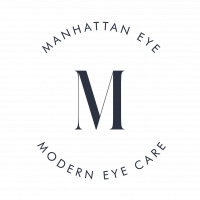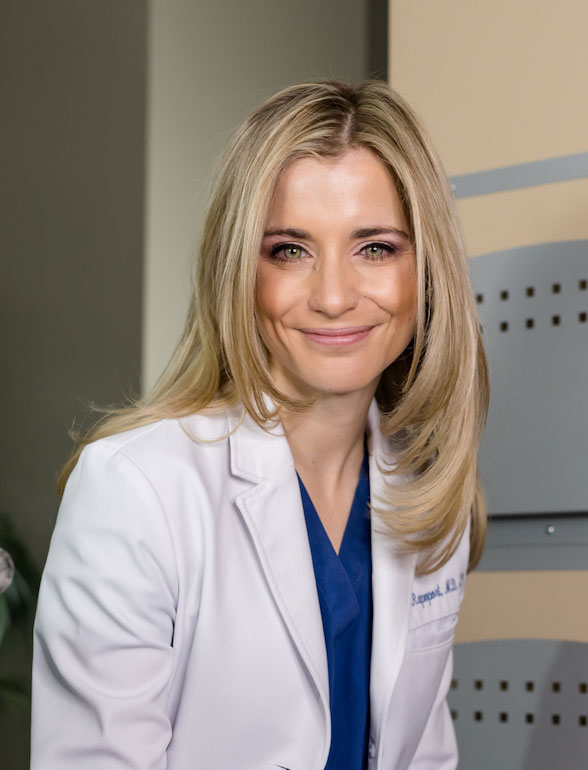Welcome to Premiere Eye Care in Manhattan.
Manhattan Eye is a premium boutique ophthalmology and LASIK practice that customizes its approach to each patient’s individual needs with a delicate touch and warm bedside manner. Our goal is to provide specialty care focusing on laser vision surgery and cataract surgery.

Same Day Appointments & Walk-ins Accepted!
We understand that your time is valuable and your health can’t wait. That’s why we’re excited to announce that we’re now accepting same-day walk-ins! We’re here for you.
EXCEPTIONAL NYC EYE CARE
Why Choose Manhattan Eye?
Experienced
Most people consider eyesight the most important of the five senses. We have the experience, training and surgical volume to provide the most advanced, effective eye care and surgery and ongoing eye wellness.
Modern
With the latest high-tech imaging modalities and equipment, Manhattan Eye provides the a modern and individualized experience. Dr. Rapoport keeps abreast of the latest techniques and has been among the first surgeons in NYC to implant the Panoptix lens and Dextenza steroid insert, and to perform collagen cross linking.
Caring
We stand apart because of our commitment to patient education, optimal outcomes, and ongoing communication. Every step of our process is streamlined for your convenience, making sure no questions are left unanswered or concern unaddressed.
Vision Boost: Essential Manhattan Eye Care Tips
Discover practical tips and exercises to keep your eyes healthy. Learn how to reduce eye strain and improve your vision with simple routines designed by eye care experts. Start caring for your vision today!

About Dr. Rapoport
Dr. Yuna Rapoport is a board-certified ophthalmologist with extra fellowship training in refractive, corneal, and cataract surgery. Having trained at Mass Eye and Ear of Harvard Medical School, the Accelerated Honors Program in Medical Education at Northwestern, and Vanderbilt, she has accumulated a fund of expertise that she now brings to each patient. Her work regarding advances in eye care and surgery has been published in leading peer-reviewed medical journals and presented at major ophthalmology meetings.
As Assistant Professor of Ophthalmology at Mount Sinai Icahn School of Medicine, Dr. Rapoport is actively involved in resident and fellow education. She is a Diplomate of the American Academy of Ophthalmology, a member of New York State Ophthalmological Society and of American Society of Cataract and Refractive surgery. Dr. Rapoport has been named a Castle Connolly’s Top Cataract and Cornea Doctor by her peers and colleagues. She is a go-to ophthalmology expert for popular media, having appeared on Dr. Oz and Inside Edition. She is the Chief Medical Officer of Luxury Optical Holdings, the largest domestic retailer of luxury glasses frames. She serves as a regular consultant for industry and for investment firms.
Dr. Rapoport is committed to global ophthalmology. After studying cataract camp models in southern India, she co-founded a nonprofit organization to help Ghanaian ophthalmologists start similar surgical models in rural parts of Ghana. She has traveled several times to Nepal to do mission trips to teach phacoemulsification surgery techniques.
Dr. Rapoport is passionate about vision. She brings her expertise, delicate touch, and warm bedside manner and creates a customizable plan for each patient, whether surgical, cosmetic, or medical.
LANGUAGES SPOKEN
English · Spanish · Russian · French · Hebrew
Overview of Services
Overview of Services
If you are coming in for a refractive evaluation, you should refrain from wearing your soft contact lenses for 10 days prior, your soft toric (astigmatism-correcting) soft contact lenses for two weeks prior and your rigid gas-permeable lenses for three weeks prior, or possibly longer. During the evaluation, we will obtain multiple images and measurements of your corneas and you will be dilated.
Conveniently, all measurements, consultations, and the LASIK procedure itself are performed right in her office so you do not have to travel far. No systemic anesthesia is required and recovery time is minimal- most patients go back to their daily lives the day after LASIK.
A cataract forms when the naturally clear lens of the eye becomes cloudy. It causes painless but progressive loss of vision. Other symptoms include glare, halos, needing more light to read, decreased color perception and frequent changes in eyeglass prescription. Cataracts are quite common among adults 60 and older; in fact, everyone will ultimately develop a cataract if they live long enough. Cataracts are generally caused by the natural aging process, but they can occur with certain medical conditions, after trauma, after intraocular eye surgery or after using certain medications.
Dr. Rapoport performs surgical removal of the cataract and implants a replacement lens as an outpatient procedure in the operating room. During this procedure, the cataract lens is broken into small fragments and removed from the eye with an ultrasound probe through a microscopic incision in the front of the eye. The cataract is then replaced with a foldable, usually acrylic, lens implant to restore the function of the natural lens that was removed.
Dr. Rapoport is a cataract surgery expert and has extensive expertise in refractive cataract surgery. Nowadays, besides just removing the cloudy lens, you have the ability to correct your vision so that your reliance on glasses is minimal. She does this using a combination of femtosecond laser assisted cataract surgery to correct astigmatism, and a variety of intraocular lenses such as toric lenses (to correct astigmatism), multifocal, trifocal, and extended depth of field lenses which aim to reduce or eliminate patients’ reliance on both distance and reading glasses. Even if you had to wear glasses for distance or near before surgery, these premium lenses reduce or eliminate your need for glasses after surgery.
For people looking for a well-rested, youthful look, Botox is the go to in order to minimize lines and wrinkles. A 15 minute in office procedure can remove years from someone’s face. Neurotoxins are injected into the face to right against gravity and prevent the skin from sagging.
Botox is a type of neurotoxin that attaches to the receptor of a muscle’s nerve and blocks the release of neurotransmitters from the nerves that signal the muscles to contract. This ultimately results in fewer lines and wrinkles. The muscle softens and does not contract. Botox slows down the process that makes the creases that form around the muscles in the face before they are permanent. It may take several treatment before the muscles really relax and the lines start to fade.
Ophthalmologists were some of the first doctors to discover the benefits of Botox, over 40 years ago, before it became popular for cosmetic reasons. It was initially used in cases of strabismus (crossed eyes) in children. Injecting into the muscle relaxed the muscle and allowed the child to have aligned vision with a non-surgical treatment. It was then expanded to use for patients with blepharospasm (spasming of the muscles around the eyes) and hemifacial spasm (spasm of an entire half the face). All throughout ophthalmology training, ophthalmologists become experts in Botox injection for a variety of conditions, including cosmetic. Since ophthalmologists work with the delicate skin around the eyes on a day to day basis, they can administer cosmetic injectable like Botox with exceptional precision.
Dr. Rapoport is an international expert in dry eye and brings extensive experience in everything from over the counter drops, prescription drops such as Restasis, Xiidra, Cequa, compounded drops (specially created drops such as lacosamide, testosterone), autologous serum tears, punctal plugs, conjuntivoplasty, and scleral lenses to each individualized patient. There is no reason to continue suffering with daily discomfort from your dryness – there is relief!
Discover Dry Eye →
At Manhattan Eye, Dr. Rapoport provides individualized treatment to each stye and provides a customized prevention plan to ensure that the underlying condition of clogged oil glands is treated and the stye does not recur again. By focusing on a wellness prevention approach, Dr. Rapoport allows for a more conservative treatment plan. Dr. Rapoport also provides facetime consultation if you are not able to make it into the office for these uncomfortable situations.
Discover Styes →
Blepharitis is quite common among people with oily skin, dandruff or dry eye conditions. Additionally, you may have mucus buildup in the morning and puffy eyelids. Occasionally, clogged meibomian glands can lead to styes. Blepharitis is an ongoing (chronic) condition and prevention is key. Dr. Rapoport provides guidance, detailed explanations of the condition, and focuses on keeping this condition under control so it does not flare up leading to styes, red and irritated eyelids, and an unsightly condition.
Discover Blepharitis →
Dr. Rapoport was fantastic - she explained all my options in detail and was very diligent in giving me instructions pre/post operations - even when I asked twice/three times. She's always available to talk and super empathetic. I could not recommend a better eye surgeon!”
I feel confident in her abilities - and it is my eyesight afterall!”
LANGUAGES SPOKEN
English · Spanish · Russian · French · Hebrew
AFFILIATIONS
Dr. Rapoport is affiliated with the following renowned institutions:






